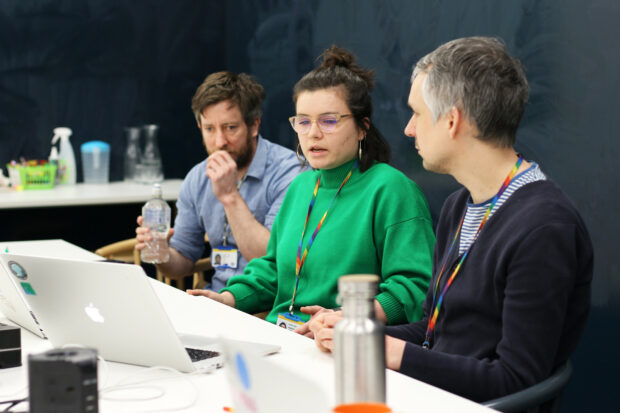
What is a trusted agitator and why should you be one?
Well, to me, a trusted agitator is a designer who has done the hard yards to make all the less visible stuff around design actually work. This is all the stuff that comes before a design is presented or research is done.
The term comes from the notion that we should all be agitating for change. But agitating on its own can often have the opposite effect, getting people’s backs up and creating bad feeling. You have to lay the foundations first.
Part of this is acknowledging: if people don’t understand design, or the value we bring, some of that is our fault.
Being a good agitator not a bad one
I wrote a thread about this on Twitter. It’s fair to say it stirred up some lively debate, with over 200,000 people interacting with the posts in some way.
In the thread I imagined what a disagreement between a stakeholder and a designer might look like in an ideal future where our work was based on credibility, trust and positive relationships.
Perhaps something along the lines of: ‘It must be really important, as you wouldn’t usually feel so strongly about this.’
The comment would be made to a designer who the stakeholder trusts, and knows is drawing on evidence and experience.
It shows a credible partnership between 2 people who have found a way to get the most out of the healthy tension between their roles in a way that makes things better.
This is the opposite of 2 clans with their own motives and agendas. That mindset just entrenches the differences and deepens the misunderstanding between designers and stakeholders.
Designing how we work together
So how do we get to this ideal future?
Be bold
When I sat down and thought about this the core sentiment reminded me of Janet Hughes' seminal piece on being bold.
Being bold means bringing your whole self to the situation and engaging fully with it. It involves openness, optimism and a commitment to something bigger than yourself.
In fact it is the absolute essence of designers finding their bold creativity and sense of wider purpose to view your role as encompassing more than you first thought it was when you entered the field.
It’s having the boldness to do what so many don’t feel confident enough to do – start right at the beginning, with relationships and building credibility, to lay out how you work, and what you will do.
It can be easy to fall into the trap of thinking a design or prototype should just stand up on its own merit, but this approach is one of hubris and pride. There is so much invisible work to do first, and from my experience, working on these invisible things are what has worked for me when needing to effect change in an organisation and mature user-centred design.
Build relationships
Be curious about stakeholders’ roles and challenges. These design adjacent disciplines are all working to the same goal, and should be seen as your user too! Putting in time with people will always pay dividends.
Build credibility and trust for design
Show the science of design (gestalt psychology, cognitive bias, behavioural economics, etc). Design often has the image of the tortured artist, and it all being about aesthetics, which we know is wrong. So show them what it's really about.
Be respectful to other disciplines
If they don't understand how design works, have you considered showing them? Have you explained our dense terminology? Have you set expectations around time frames for different activities? Have you opened your world up? Have you shown interest in theirs?
Look for opportunities in the overlaps
Don't be territorial.
If a product manager brings you their ideas as a wireframe, this is not toes stepped on – this is a great opportunity to open up a conversation and position yourself as the expert.
An ideal conversation that is inclusive and positive starts like this: "Thanks for bringing this, here is what I recommend from the evidence I’ve seen and experience I have".
Get comfortable with slow
You'll notice I used the word 'build' a lot in the above suggestions for change. And you can’t demand trust, it has to be built.
Building takes a long time. If you want to see real change in the way user-centred design is valued and viewed, you have to be comfortable with the fact it will take time.
People don’t like change, and there is usually a very valid emotional reason for that at the core of why they don’t want to accept changes to the status quo.
As user-centred designers we should be able to understand this – after all we work in the messy world of people and all the myriad of grey areas this entails, compared to the black and white binary world of computers and technology.
Obviously this is a privileged position to approach how you work. I want to acknowledge that a lot of us are just trying to show up and do our jobs, and that is okay. Not every situation is the same, and we’re not all operating under the same personal circumstances that gives us the time, position or energy to agitate for change like this.
Ripples for the long term
A lot of this comes down to asking yourself 'what small things can I influence now?' and 'what can't I influence, yet?'. There are some lost causes you need to make peace with, but there are lots of long term plans you can make which ripple out and create change in the future.
Design is a long game, and we need to be comfortable with building solid foundations based on people and their trust in our discipline so we can progress the vital work we do on essential public services.
